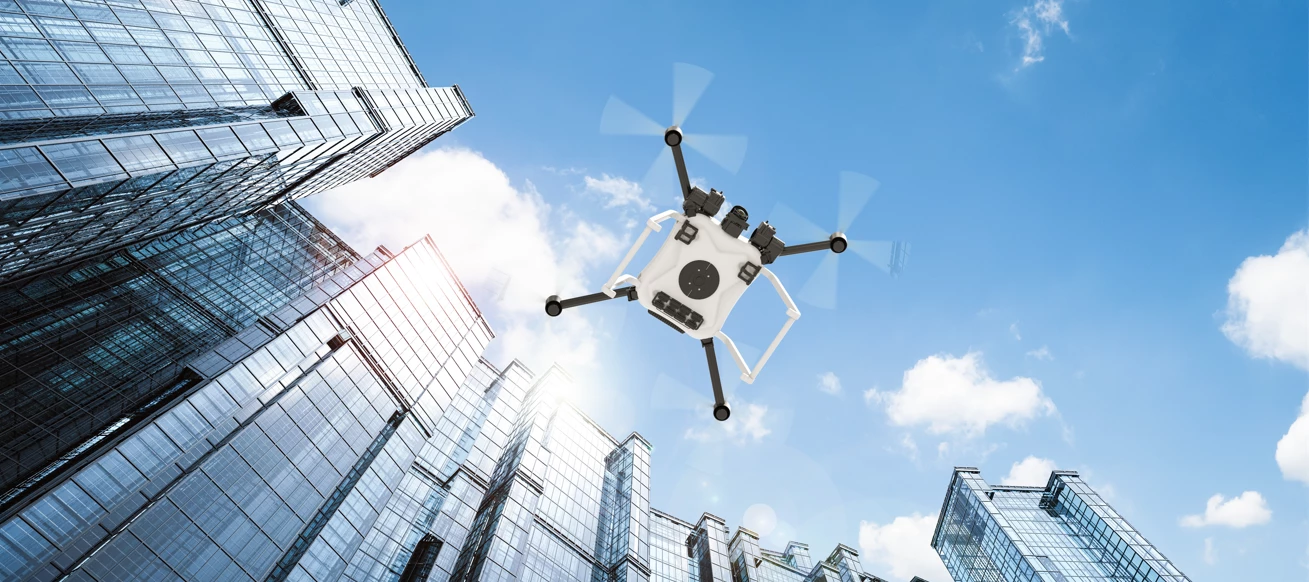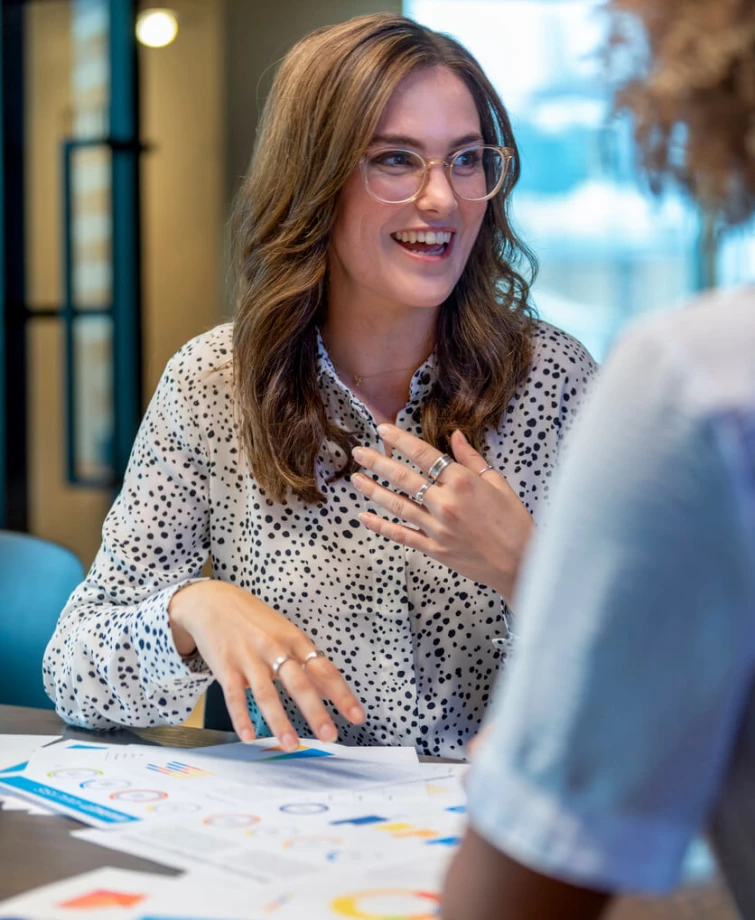In this article, Andrew Buckley, Trial Consultant at IMS Legal Strategies, shares drone video capture techniques, offers examples of cases in which this video can be used, and describes the many ways drone footage can enhance both courtroom and online trials.
If you are like most attorneys, you think of drones in terms of their ability to capture images of large expanses of land and sea—and they are great for that purpose. But Andrew Buckley, trial consultant and a certified drone pilot, knows drone cameras are capable of capturing much more than top-down, wide-lens aerial photos and videos.
“Drones offer a variety of options beyond the typical Google Maps-type shot,” Andrew explained. “Drone cameras can take still and video shots from all sorts of angles, both high and low. They can pan large expanses and zoom in on particular objects. They enable attorneys to capture dynamic footage that coincides with their case narratives.”
Drones Can Provide Jurors with a Point of View
Just like when Hollywood filmmakers place a camera in a position that shows viewers what a character in the scene is seeing, drones can film at a level that mirrors the perspective of a party or witness in a lawsuit. When jurors view video filmed using this point-of-view technique, they have the sense that events are unfolding before their eyes. Andrew said this type of video evidence impacts them on both a cognitive and an emotional level.
“For example, in a personal injury case in which a worker fell from a high platform, it wouldn’t be feasible to use a handheld camera to capture that scenario, but a drone could capture it and do so from the eye level of that employee,” said Andrew. “The drone’s film could show, from the employee’s vantage point, the lack of safety precautions to prevent that fall. Using a single, continuous video clip, the film could also connect the viewers to the actual height of the environment by enabling them to follow the trajectory of the worker’s fall to the ground.”
He added, “The plaintiff would have a difficult time overcoming that evidence because the jurors will have had a near real-life experience when observing it.”
Drones Can Relay the Concept of Motion
In lawsuits in which motion or speed is at issue, such as a case involving a car crash, Andrew said point-of-view footage can help jurors gain a sense of that movement.
Google Earth might be used to trace the path of a car going down a road in real time, but it would portray a rough, rudimentary 3D model; thus, viewers would merely feel as if they were observing the action from afar. Also, its satellite or street level images could be out of date, omitting vital details that would have to be explained by the witness or imagined by the viewer.
A drone, however, could be flown over the roads the car traveled and at its height and speed, capturing the most important narrative details so that viewers would feel a part of that experience.
Drones Increase the Amount of Information Jurors Receive
Andrew and his colleague, IMS Trial Consulting Lead Dan Martin, recently used a drone to capture footage for an environmental case. The video took jurors on an aerial journey to view a Louisiana bayou from on high, but also from down low, so they flew just above rippling waters and swamp plants waving in the wind. It featured static shots, which guided viewers to focus on particular images, such as hornets busily working on their nest. And the video employed several slow-moving vertical pans from the bottom to the top of cypress trees.
These various camera and video techniques, many of which were accomplished via drone, supplied jurors with a wealth of information. The high-altitude, wide-angle views gave them an idea of the scale of the terrain. The close-up motion and still shots provided a sense of the number and variety of plants and animals. And the slow-moving pan shots informed jurors about the size of the natural elements they were viewing.
All this information was powerful evidence that the jury could not ignore. The plaintiff in that case had claimed that the defendant, IMS’s client, had destroyed the region when it installed oil wells and pipelines. The drone video footage depicting a lush and pristine bayou certainly called that claim into question. Interestingly, the drone also captured an area that actually did contain industrial debris; however, it was the plaintiff and not the defendant who had created that dumping ground.
Said Andrew, “We can relay information about a scene through witness testimony. We can use still pictures, charts, and graphs. But in this case, we were able to capture compelling video that enabled viewers to practically experience the scene for themselves. Without the drone, that feat would have been impossible because the area was largely inaccessible.”
Combining Mediums Creates a Dynamic Presentation
“Drone footage allows for all sorts of possibilities,” Andrew explained. “Attorneys shouldn’t think of the medium simply in terms of a video presentation. The footage can be combined with text overlays, color coding, and still photos so the presentation is intriguing and fully depicts the case narrative.”
He gave an example of how a drone might be used to capture all sides of a building or large piece of industrial equipment. That footage could then be used to create a 3D model of that structure, or it could be turned into an interactive video that would allow a witness to move a cursor backwards and forwards along the video timeline to display various features of the structure that coincide with their testimony. Certain features could even be blown up into large images or overlaid with text.
“Drones are simply another tool that enable attorneys and witnesses to become better visual storytellers in the courtroom,” said Andrew. “And often, when tools are combined, a presentation becomes very powerful.”
You Need an FAA Certified Drone Pilot
In order to operate the IMS drone, Andrew needed to acquire an FAA Part 107 pilot certification. Attainment of this certification required careful study of some of the very same subject matters that pilots who plan to sit in cockpits must learn. For instance, Andrew had to learn quite a bit about weather patterns.
“In order to fly a drone safely, you need to know how cloud conditions, temperature, and wind are going to affect your flight,” he said. “Dangerous updrafts and downdrafts can be caused by humidity and other weather conditions, and even by the presence of tall buildings.”
Andrew also studied airspace regulations, air traffic control patterns, and how to read airspace maps. He uses these maps to discern whether low-flying planes or helicopters will be in the airspace in which he intends to fly the drone. Although the drone is not typically flown above 400 feet, the possibility for air crashes still exists.
Airspace maps are also used to help discern which entities within a flight zone utilize geofences—virtual fences that, when breached, alert the entity controlling the airspace and can even cause the pilot to lose control of the drone. Airports, military installations, and large public events, for instance, often employ these virtual boundary lines.
“I want to stay a good distance from a military installation,” Andrew confirmed. “I don’t want to take a chance that a gust of wind blows the drone into a military geofence.”
On top of all these airspace considerations, Andrew has to keep up with the constantly evolving laws related to drones and privacy issues. Although his certification training informed him about federal laws regarding the type of imagery he may legally capture, states and local areas have enacted their own laws.
Your Certified Pilot Needs to Have the Eye of a Visual Storyteller
When you are seeking a drone pilot to capture imagery for your case, that pilot needs to possess skills beyond those required for certification. They need to have the sensibilities of a visual storyteller who knows precisely which images are going to intrigue viewers. And they need to have courtroom experience so they are aware of the images that will enable you to relay your case most poignantly.
Andrew has a background in photojournalism, and he and his colleagues in the IMS Trial Consulting and Graphic Design departments are skilled in photography, videography, graphic design, and multimedia formats. He shared, “Drones have greatly expanded our possibilities for visual storytelling.”
What About Cost?
In the grand scheme of what it costs to go to trial, it’s not very expensive to include drone footage in your case strategy. The bulk of the costs relate to the drone team’s travel and hotel expenses and the time commitment required.
Andrew revealed, “There is a lot of good value in drone footage. It can be used as standalone footage or integrated into the graphics production process. And because it has such potential to hammer home your narrative, it can make a real difference in your case outcome. In fact, in several instances, shortly after viewing our sides’ drone imagery, the opposing parties instigated settlements.”
View this article on The National Law Review here: How Drone Footage Can Enhance Both Courtroom and Online Trials (natlawreview.com)






